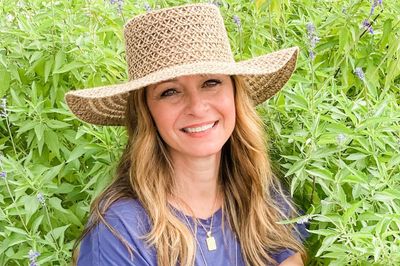As told to Jackie Froeber
February is Age-Related Macular Degeneration Awareness Month.
Imagine looking across the table at your loved one, but you can’t see their face. Instead, a large black blind spot takes over the center of your vision. No matter how hard you blink or rub your eyes, the blind spot stays. This is what it’s like to have macular degeneration (MD) — an eye disorder where damage to the retina can cause permanent blindness.
I learned all about the condition in optometry school, but nothing could prepare me for the helplessness that came with diagnosing a family member with MD and the crushing realization that the genetic disorder may take my eyesight, too.
Back in 2012, my grandmother was scheduled for a routine eye exam with me. I was excited to see her, as always. My grandmother and I have always been close and she has been especially supportive of my career as an optometrist. She came to every family day and graduation and she regularly drives more than an hour to see me for her eye exams. On this particular visit, she wasn’t experiencing anything abnormal or any vision changes, so we started the routine tests.
Carver-Schemper and her grandmother, Alice Pittard, 2020
As I was examining her first eye, my heart dropped to the floor. I could see that her macula — the part of the retina responsible for clear central vision — was deteriorating. She was in the early stages of dry macular degeneration in both eyes. I was shocked. The condition is actually very common for women 50 years and older, but you never imagine that you would have to tell your loved one that they may lose their sight. Holding back tears, I struggled to explain to her that her vision may become blurry — she may even lose her line of sight — but we would do everything we could do to prevent the disease from progressing. And that meant a lot of lifestyle and diet changes.
From that moment on, my entire family put our eye health first. Since MD is more common in women than men, my mother and I are especially diligent to schedule eye exams every six months. Being active is important when you have a family history of MD, so we started exercising regularly — I love to salsa dance — and taking family walks when we get together. We also started the tradition of running or walking a 5K on Thanksgiving. Mom and I never go anywhere without sunglasses and we changed our diet to incorporate more leafy greens and take supplements for eye health.
Carver-Schemper’s School Graduation. Left to right: Carver-Schemper’s mom, Susan Clayton; Carver-Schemper; Carver-Schemper’s grandmother, Alice Pittard, 2001
My grandmother made all the changes, however, in 2014, her MD progressed to wet macular degeneration in both eyes. This meant that fluid was sitting in the layers of her retina and damaging her vision. Now, she would need medicine injected into her eyes to help absorb the fluid. It’s like if your basement flooded and you didn’t remove the water, there would be more damage.
If the progression and shots weren’t hard enough, I also had to tell her that she could no longer drive. My grandmother has always been fiercely independent and was used to getting up and driving whenever and wherever she wanted to go. Most days of the week, she would meet her friends at a local café for biscuits and coffee. But now, at 78 years old and with her central vision deteriorating, it wouldn’t be long before she could no longer see the traffic signs among other important details.
When I told her, it took everything in me not to break down and sob in front of her. I wanted to be strong for her, but it was devastating to imagine my grandmother relying on someone else when she’s always been the strong one. She’s always been my biggest cheerleader and in that moment she continued with her positive spirit and told me whatever I wanted her to do, she would do. Over the next seven years, she had 24 injections in her eyes. Although she has lost most of the vision in her right eye, the injections helped resolve the fluid, and she can still see out of her left eye. She never complains and continues to be her strong 90-year-old self today.
My grandmother always makes me giggle. We still cook together and travel out to the beach to put our toes in the sand. She needs a little extra help these days, but still loves to drive to the North Carolina mountains, play bingo and spend time with family. She was the first one in my family that I’ve ever had to diagnose with a serious eye disorder and her struggle rocked me to the core. Through the decline of her vision, the shots and constant uncertainty, I know firsthand that MD is frightening — and knowing that I have a family history has made me a stronger granddaughter, daughter and doctor.


